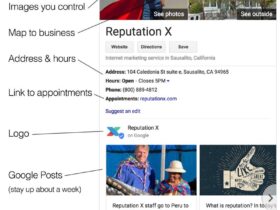You’ve put in a lot of time and effort to build a strong personal leadership brand and get to where you are now. Your audience sees you as a trusted expert in your field and you’ve conveyed your value successfully. But now, things are changing. Maybe you’ve just been promoted, you’re considering a new line of work, or you’re just ready for a change. Whatever the reason, you find yourself needing to pivot your brand to align with your new direction.
Up until now, I’ve talked a lot about how important it is to ensure that your brand remains relevant and resonates with your evolving career transitions. But how do you make these changes without losing your credibility? How can you persuade others to embrace your repositioned personal brand and take you seriously?
It’s not as intimidating as you might think. Repositioning your brand is a natural part of career progression and transition, and it’s something you’ll likely find yourself doing more than once.
What exactly does it mean to “pivot your brand”?
When you are pivoting or repositioning your brand, you are essentially realigning yourself to better reflect your current goals, values, or circumstances. Does this mean you should toss your entire brand out the window? Absolutely not.
You should make a conscious effort to change how people perceive you – but without compromising everything you already represent. A big part of this process is creating a narrative that connects your new brand to your existing one and then highlighting the shift (but I’ll get back to this in a moment).
So, how do you know when it’s the right time?
One of the clearest signs that your personal leadership brand needs rejuvenation is when you start to feel disconnected from it. Your brand doesn’t feel like “you” anymore. And because your brand doesn’t quite resonate with who you are anymore, it becomes difficult to lead with authenticity.
This doesn’t make you a phoney. Feeling disconnected from your brand isn’t always a sign that something is wrong. More often than not, it’s a sign that you’re evolving. As we grow and experience new things, our vision and mission also pivot.
How to pivot your brand during career changes
Realising that you need to shift gears is only half the battle. Figuring out how to actually do it is a whole different story. Here are some steps and strategies to help you out.
#1 Do a brand audit
Whenever I transitioned in my career, it was important to assess which aspects of my brand needed attention. I needed to see what was working and what wasn’t, especially with changes in my role and/or the industry.
You also need to consider which aspects of your brand still serve you and which ones no longer do. What do you have that could potentially translate into a new role? You might still want to keep some of the elements that have propelled you to where you are today.
#2 Redefine your goals and direction
Don’t let the pressure to make a huge impact stall your progress. Waiting for the “perfect” moment will only hold you back. Figure out where you want to go and why.
Maybe you want to reach a new audience who might respond better to a different approach than your current one. Or perhaps you want to introduce a new technology or experience that can make your brand stand out even more. It could also be that you want to highlight an additional skill or value that isn’t conveyed in your current branding yet.
#3 Keep your story consistent with your past
When you develop your narrative, remember not to ignore where you came from or try to stretch the truth because people will notice. Don’t assume it isn’t relevant either.
As Dorie Clark says, “[Learn to explain] exactly how your past fits into your present.” How does it connect to what you’re doing now? Focus on the benefits your experience brings as you talk about your transition, rather than on your own interests.
#4 Introduce your new brand and take ownership of your growth
Finally, reintroduce yourself. After you’ve fully embraced changes to your personal leadership brand, it’s relatively easy to connect with new people because they will accept and interact with you based on your updated image. The more challenging part is reintroducing yourself to people who already know you.
If you receive any negative feedback from your current network, take the opportunity to strategically address and educate them. When you produce content that is clear and consistent, both your current and ideal connections will understand your message and trust you. Keep in mind that trust forms the cornerstone of your brand. People choose to engage with you because of trust. As your community grows, so will the relationships, which will lead to more trust.
And more importantly, actively seek out opportunities that align with your evolving brand and get involved with projects that highlight your new skills and passions. Go to higher-level networking events and make sure your updated brand is communicating the message that you want.
#5 Assess your progress
As I evolved my brand over my career, it’s always been extremely important for me to monitor the outcomes. These outcomes were based on the specific goals I set for each role. I suggest asking yourself questions like, “Am I now getting access to those higher-level projects I aimed for, or am I still getting blocked?” It’s important to evaluate whether the changes you were hoping for are actually happening.
If your “new” brand isn’t working for you, you may need to take a step back and figure out what’s holding you back from communicating it properly. Make sure to give yourself enough time to let others catch up with your changes before you start evaluating the results. Just like with any change, people might need some time to get used to it.
The bottom line
As you climb the corporate ladder, you will need to rebuild or pivot your personal leadership brand to keep up with evolving business. If you don’t, it will hold you back from reaching your goals and becoming the person you aspire to be. That being said, you will need to take the time to lay down the groundwork first and think about how you’ll keep your brand clear and consistent as you move forward.















